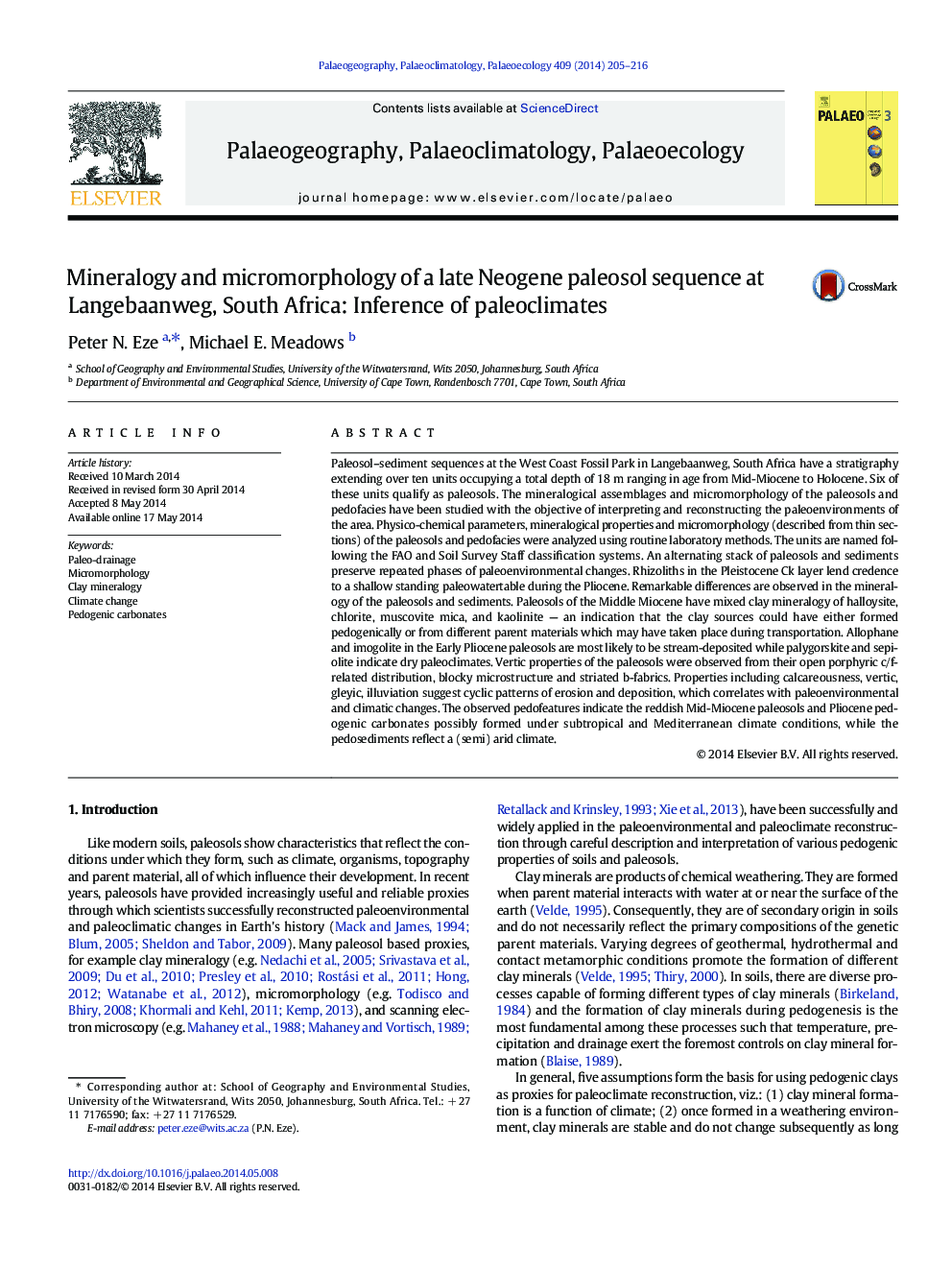| کد مقاله | کد نشریه | سال انتشار | مقاله انگلیسی | نسخه تمام متن |
|---|---|---|---|---|
| 6350097 | 1622181 | 2014 | 12 صفحه PDF | دانلود رایگان |
عنوان انگلیسی مقاله ISI
Mineralogy and micromorphology of a late Neogene paleosol sequence at Langebaanweg, South Africa: Inference of paleoclimates
دانلود مقاله + سفارش ترجمه
دانلود مقاله ISI انگلیسی
رایگان برای ایرانیان
کلمات کلیدی
موضوعات مرتبط
مهندسی و علوم پایه
علوم زمین و سیارات
فرآیندهای سطح زمین
پیش نمایش صفحه اول مقاله

چکیده انگلیسی
Paleosol-sediment sequences at the West Coast Fossil Park in Langebaanweg, South Africa have a stratigraphy extending over ten units occupying a total depth of 18Â m ranging in age from Mid-Miocene to Holocene. Six of these units qualify as paleosols. The mineralogical assemblages and micromorphology of the paleosols and pedofacies have been studied with the objective of interpreting and reconstructing the paleoenvironments of the area. Physico-chemical parameters, mineralogical properties and micromorphology (described from thin sections) of the paleosols and pedofacies were analyzed using routine laboratory methods. The units are named following the FAO and Soil Survey Staff classification systems. An alternating stack of paleosols and sediments preserve repeated phases of paleoenvironmental changes. Rhizoliths in the Pleistocene Ck layer lend credence to a shallow standing paleowatertable during the Pliocene. Remarkable differences are observed in the mineralogy of the paleosols and sediments. Paleosols of the Middle Miocene have mixed clay mineralogy of halloysite, chlorite, muscovite mica, and kaolinite - an indication that the clay sources could have either formed pedogenically or from different parent materials which may have taken place during transportation. Allophane and imogolite in the Early Pliocene paleosols are most likely to be stream-deposited while palygorskite and sepiolite indicate dry paleoclimates. Vertic properties of the paleosols were observed from their open porphyric c/f-related distribution, blocky microstructure and striated b-fabrics. Properties including calcareousness, vertic, gleyic, illuviation suggest cyclic patterns of erosion and deposition, which correlates with paleoenvironmental and climatic changes. The observed pedofeatures indicate the reddish Mid-Miocene paleosols and Pliocene pedogenic carbonates possibly formed under subtropical and Mediterranean climate conditions, while the pedosediments reflect a (semi) arid climate.
ناشر
Database: Elsevier - ScienceDirect (ساینس دایرکت)
Journal: Palaeogeography, Palaeoclimatology, Palaeoecology - Volume 409, 1 September 2014, Pages 205-216
Journal: Palaeogeography, Palaeoclimatology, Palaeoecology - Volume 409, 1 September 2014, Pages 205-216
نویسندگان
Peter N. Eze, Michael E. Meadows,